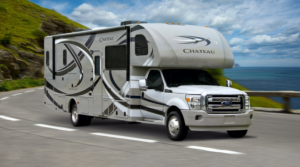July 2, 2024
Find A RV Value using NADA Guides

Whether you’re looking to buy, sell, or trade-in your RV, knowing its true market value is crucial. One of the most trusted resources for this information is the NADA Guides. In this blog post, we’ll explore how to find an RV’s value using NADA Guides, ensuring you make informed decisions in the dynamic world of recreational vehicles.
Contents
hide
What is NADA Guides?
The National Automobile Dealers Association (NADA) has been a reliable source for vehicle valuations for over a century. NADA Guides offer comprehensive valuation data for various types of vehicles, including cars, trucks, motorcycles, and RVs. These guides provide estimated market values based on extensive data analysis, helping buyers and sellers determine fair prices.
Why Use NADA Guides for RV Valuation?
- Trusted Authority: NADA Guides are widely recognized and respected in the automotive and RV industries.
- Accurate Data: The guides use extensive data from dealers, auctions, and private sales to provide accurate valuations.
- Ease of Use: NADA Guides are user-friendly and accessible online, making it easy to find the information you need.
Steps to Find Your RV’s Value Using NADA Guides
- Visit the NADA Guides Website: Navigate to the official NADA Guides website.
- Select the RV Section: Choose the RV section from the main menu to access RV-specific valuation tools.
- Enter RV Information: Provide detailed information about your RV, including make, model, year, mileage, and condition. The more accurate your input, the more precise the valuation.
- Add Optional Features: Include any optional features or upgrades your RV has. These can significantly impact its value.
- Get Your Valuation: Once you’ve entered all necessary details, the website will generate an estimated market value for your RV.
Understanding the Factors Influencing RV Value
- Age and Condition: Newer RVs in excellent condition typically have higher values. Regular maintenance and care can preserve your RV’s value over time.
- Mileage: Lower mileage often equates to higher value, as it suggests less wear and tear.
- Market Trends: Current market conditions, including supply and demand, regional preferences, and economic factors, can influence RV values.
- Optional Features: Luxury features, advanced technology, and customizations can boost your RV’s value.
Benefits of Knowing Your RV’s Value
- Informed Buying Decisions: Knowing the fair market value helps you avoid overpaying for an RV.
- Effective Selling Strategies: Set a competitive asking price to attract buyers and sell your RV quickly.
- Better Trade-In Deals: Leverage your RV’s value to negotiate better trade-in offers at dealerships.
- Insurance Purposes: Ensure you have adequate insurance coverage based on your RV’s true worth.
Also see: